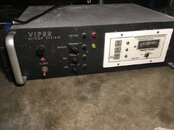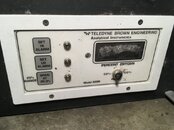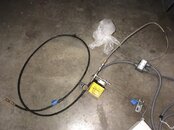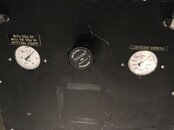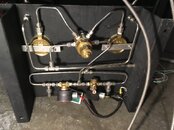You are using an out of date browser. It may not display this or other websites correctly.
You should upgrade or use an alternative browser.
You should upgrade or use an alternative browser.
Viper Nitrox System - looking for info
- Thread starter guruboy
- Start date
Please register or login
Welcome to ScubaBoard, the world's largest scuba diving community. Registration is not required to read the forums, but we encourage you to join. Joining has its benefits and enables you to participate in the discussions.
Benefits of registering include
- Ability to post and comment on topics and discussions.
- A Free photo gallery to share your dive photos with the world.
- You can make this box go away
I don't know anything about that specific system, however there are concerns about mixing nitrox using an electronic controller. If it 100% relies on an O2 sensor then you can get spikes if the sensor dies, or is current limited. The controller will keep trying to add O2 because it thinks it's too low. The only safe way to use a system like that is to limit the regulator so that it can only supply 40% total oxygen when the system is fully open. That means even if the controller thinks it needs to add more the output pressure of regulator (LP side) physically will limit it to a max of 40% through the compressor.
You're better offer just buying a CGA O2 regulator, setting the output pressure so that it is limited to 40%, then just using an El Cheapo II analyzer, or any o2 analyzer and a DIY mixing stick.
You're better offer just buying a CGA O2 regulator, setting the output pressure so that it is limited to 40%, then just using an El Cheapo II analyzer, or any o2 analyzer and a DIY mixing stick.
Last edited:
OP
That's why you calibrate O2 sensors.
I'm guessing you'll never dive an eCCR either.
I'm guessing you'll never dive an eCCR either.
Actually I have dove CCR and have done quite a bit of nitrox and trimix blending. CCR's have 3 cells, how many does your new system have? The problem is O2 cells suck and they do die. If they die while you're mixing you can end up pumping 100% into the compressor then there is a huge fire/explosion hazard. This was a consideration when we designed the Accublend system, and that's why it has manual needle valves and comes with a set of instructions to setup the O2 reg.
-Jeff H. (aka Jeff Hunter)
-Jeff H. (aka Jeff Hunter)
OP
It would take a severe lack of maintenance to reach that kind of situation.
Perhaps the same level of negligence that could lead to 2/3 O2 sensors failing and out voting the working one.
Perhaps the same level of negligence that could lead to 2/3 O2 sensors failing and out voting the working one.
Last edited:
No, there is no maintenance on an O2 sensor, there's just an output voltage. If you're lucky there's a multi-point calibration and you understand how to check for the linearity of a cell.
Take a step and back and look at my first post. I offered some reasonable advise on how to attempt to use that thing safely. I also offered a cheap alternative that would probably do a better job. What are the benefits of this system that you received for free?
Take a step and back and look at my first post. I offered some reasonable advise on how to attempt to use that thing safely. I also offered a cheap alternative that would probably do a better job. What are the benefits of this system that you received for free?
Last edited:
OP
Who said I was trying to use it?
OP
Thank you for your inputs.
Now please excuse me as I try to find the information I'm actually looking for.
Now please excuse me as I try to find the information I'm actually looking for.
I found a manual online for the 329R Teledyne analyzer used in the controller (http://www.teledyne-ai.com/manuals/man_329r.pdf). It dates back to 1992, so this might be a mixing system from that era.
It will be interesting to see if anyone is familiar with the system. I bet if you searched through some old Aquacorps magazines from the mid 90's there might be an advertisement, or article about it.
It will be interesting to see if anyone is familiar with the system. I bet if you searched through some old Aquacorps magazines from the mid 90's there might be an advertisement, or article about it.
Similar threads
- Replies
- 14
- Views
- 1,158
- Replies
- 13
- Views
- 1,066
- Replies
- 6
- Views
- 460
- Replies
- 3
- Views
- 285




